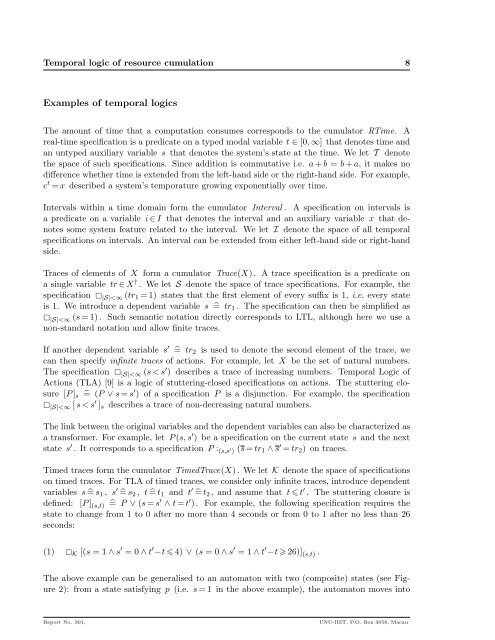IIST and UNU - UNU-IIST - United Nations University
IIST and UNU - UNU-IIST - United Nations University
IIST and UNU - UNU-IIST - United Nations University
You also want an ePaper? Increase the reach of your titles
YUMPU automatically turns print PDFs into web optimized ePapers that Google loves.
Temporal logic of resource cumulation 8<br />
Examples of temporal logics<br />
The amount of time that a computation consumes corresponds to the cumulator RTime. A<br />
real-time specification is a predicate on a typed modal variable t ∈ [0, ∞] that denotes time <strong>and</strong><br />
an untyped auxiliary variable s that denotes the system’s state at the time. We let T denote<br />
the space of such specifications. Since addition is commutative i.e. a + b = b + a, it makes no<br />
difference whether time is extended from the left-h<strong>and</strong> side or the right-h<strong>and</strong> side. For example,<br />
e t = x described a system’s temporature growing exponentially over time.<br />
Intervals within a time domain form the cumulator Interval . A specification on intervals is<br />
a predicate on a variable i ∈ I that denotes the interval <strong>and</strong> an auxiliary variable x that denotes<br />
some system feature related to the interval. We let I denote the space of all temporal<br />
specifications on intervals. An interval can be extended from either left-h<strong>and</strong> side or right-h<strong>and</strong><br />
side.<br />
Traces of elements of X form a cumulator Trace(X) . A trace specification is a predicate on<br />
a single variable tr ∈ X † . We let S denote the space of trace specifications. For example, the<br />
specification |S|
















